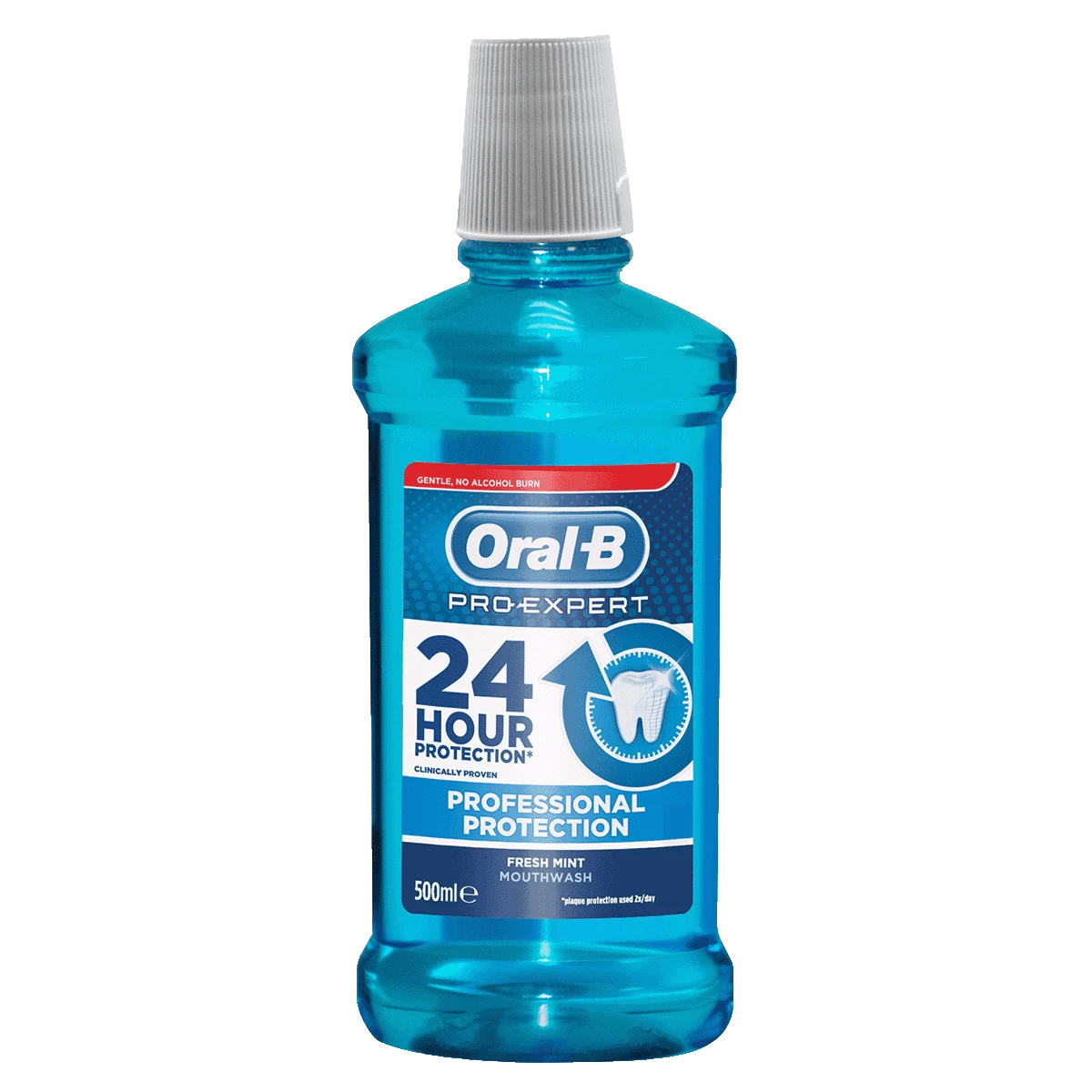
Curious about mouthwash? Here’s how to use mouthwash, how long to use it for, and how much to use as part of your daily routine.
What is mouthwash?
A mouthwash is an oral rinse often used to freshen breath. However, there are several different types of mouthwash available that provide additional benefits, these can include whitening, gum care, and cavity protection.
How to Use Mouthwash
Keep these points in mind to get the most from your mouthwash or mouth rinse:
Dilute If Necessary - Be sure to read the label on any brand of mouthwash that you choose. Different brands have different concentrations, and some may recommend that you dilute them with water. Remember, if the label does not tell you to dilute, then you may not get the full benefit of the mouth wash if the germ-killing ingredients are at a lower level.
Mouthwash is not a replacement - It is essential to remember that no mouthwash is a replacement for the regular oral care routine of twice-daily brushing and daily flossing. So, even if your dentist recommends or prescribes a mouthwash, you still need to follow your complete oral care routine to maintain good dental health.
Watch The Clock - One of the keys to using mouthwash correctly is to swish it in your mouth for the correct amount of time. Read the product label. Most mouthwashes recommend that you swish the product around in your mouth for 30 seconds to one minute then spit it out.
How to Use Mouthwash with Fluoride
If you're prone to cavities, you can use a fluoride mouth rinse in addition to brushing and flossing your teeth.
Steps to follow when using fluoride rinse:
Use the right amount - How much mouthwash to use is usually dependent on the mouthwash itself. Use the amount of rinse indicated on the label or as directed by your dentist or dental hygienist. Often, a cap full of mouthwash is all you need.
Swish like you mean it - Keep your mouth closed and swish the rinse vigorously for about 30 seconds or as directed on the label.
Spit - Don't swallow mouth rinse. The fluoride in most fluoride rinses can be toxic if you swallow large enough amounts. If you allow your child to use mouthwash, supervise to be sure that he or she spits it out and doesn't swallow it.
Wait - To get the most benefit from a fluoride mouthwash, avoid eating, drinking, or smoking for at least 30 minutes so you don't wash away the fluoride.
Some studies have shown that mouth rinses with fluoride can supplement daily brushing with fluoride toothpastes, especially in areas where drinking water is not supplemented with fluoride. These rinses are effective in strengthening the enamel of your teeth and protecting your teeth from acid damage.
Not sure how often to use mouthwash throughout the day? Your mouthwash label should indicate how often to use it daily. In most cases, twice a day should be enough.
Oral Rinses as Part of Dental Hygiene
A complete plan for daily dental hygiene is centered around twice-daily tooth brushing and flossing, but you may also want to consider adding a mouthwash to the mix. However, it’s important to wait to use mouthwash after brushing teeth. To get the most out of your routine, wait at least 30 minutes to rinse after brushing.
Oral rinses may contain a variety of ingredients to battle bacteria in the mouth, including cetylpyridinium chloride (CPC), a germ-fighting ingredient which has been shown to be safe and effective, although a small number of people have reported a temporary unpleasant aftertaste.
Other oral rinse ingredients include povidone iodine and essential oils. But any oral rinse can help enhance your daily dental hygiene routine.
Overall, using a mouthwash with povidone iodine, essential oil or chlorhexidine significantly reduced plaque and reduces bacterial indicators of gingivitis. A fourth mouthwash that contained an herbal extract did contribute to plaque control but the improvement was not significant.
Studies have shown that oral rinses can reduce more plaque and more signs of gingivitis when used in addition to tooth brushing compared with tooth brushing alone.
How Does Mouthwash Work?
The ingredients in mouthwash come down to the specific benefits that oral rinse provides. For example, cavity protection mouthwash is formulated with fluoride and can help neutralize plaque bacteria in the mouth. Mouthwash works to dislodge any leftover food particles and debris as well as reduce bad breath germs.
The answer to the question on what mouthwash does varies depending on the type of mouthwash. Some freshen breath, others provide an anti-cavity benefit from fluoride, while others contain germ-killing ingredients to help prevent plaque buildup on teeth.
It’s important to note that mouthwash does not replace a regular oral hygiene routine of twice-daily tooth brushing and daily flossing.
That said, some types of mouthwash, such as fluoride rinses, can help protect teeth against acids produced by plaque bacteria if you use them after you have thoroughly brushed and floss your teeth.
If you are recovering from a fungal infection or a bout of gum problems your dentist may prescribe a specific mouth rinse or mouthwash for your gum issues.
If you suffer from severe chronic bad breath (halitosis), talk to your dentist about other ways to address the causes of the problem and manage your bad breath condition.
Related Articles
Sign Up
for expert advice and exclusive offers






